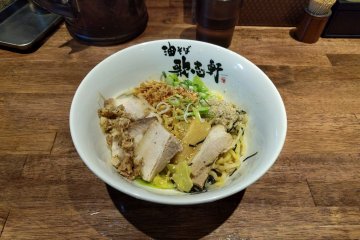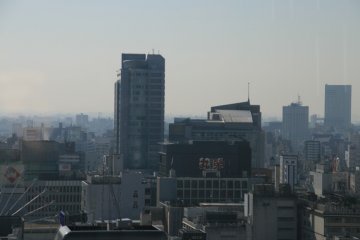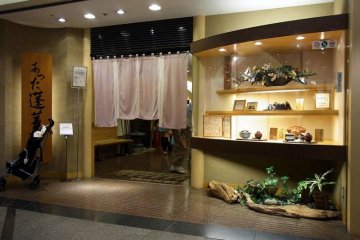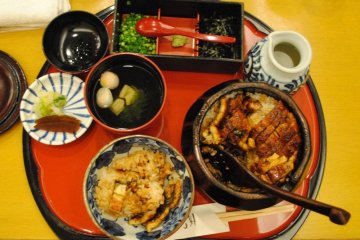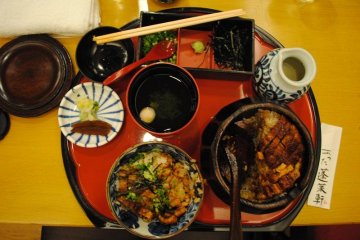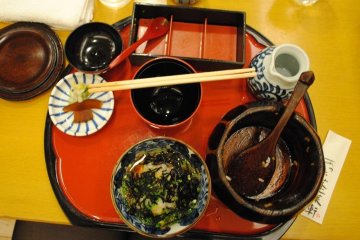When the dog days of summer strike, Japanese look to the sea for the solution. Eel. Eating eel is a time-honored way to regain stamina, but boils down to being a Japanese comfort food in the heat of summer. A regional specialty of the Nagoya area is hitsumabushi, a type of eel dish only found in that area.
On a quest for the best place to try this dish, doing a bit of investigating or even just asking at the tourist information desk at Nagoya Station, all signs point to Horaiken, located in the Matsuzakaya department store in the Sakae area of Nagoya.
Horaiken’s name is the same as the original name for hitsumabushi, and looking at the window display, their specialty is clear. Where most Japanese restaurants offer a variety of plastic food in their window, to tempt as many tastes as possible, Horaiken has only three dishes displayed – two versions of an eel donburi set on the lower shelf, and the glorious hitsumabushi that gets a shelf all to itself.
It’s a dish with a long history, and that shows in the way it is eaten in a ritualistic order. Horaiken kindly offers a multi-lingual instruction-sheet to help first-timers.
As a vegetarian who sometimes eats fish to help get by in Japan, it’s something I generally shy away from unless being polite, because I simply don’t like it. Horaiken’s hitsumabushi is amazingly smooth-tasting and easy to eat. It’s sweet in a mild way and not fishy or objectionable in any way that even a picky eater such as myself could find.
The four-step eating process might intimidate some, but it’s pretty basic and actually makes eating the dish more interesting and enjoyable! Never fear! You can do it!
Step One: It’s easiest to use your wooded spoon to section the unagi and rice contents of the beautiful carved wooden bowl first. Then, scoop out one-fourth and put it in the smaller bowl provided (here is where you get your first look at the extra layer of eel about half-way down the rice!!). Eat this portion without adding any of the extras on the tray.
Step Two: Put the next fourth in your smaller bowl and add some of the toppings from the three-sectioned dish at the top of your tray (left-to-right, you have chives, a mild wasabi, and seaweed). The wasabi is mild. Try adding a little bit and mixing it in at first. It shouldn’t make a huge impact on any one bite.
Step Three: This is where it gets a bit different. The next fourth goes in the bowl with more of the toppings from the three-sectioned dish and add some of the soup stock in the small jar by the wooden bowl. The jar is hot, so be careful.
Step Four: All-in. Everything that’s left goes in the bowl.
Hitsumabushi is not for the faint of pocket-book, as the meal is a solid 3100yen (as of summer 2012). Eel prices change based on the season and availability, so some years it costs more than others. The friendly lady at the station warned me this was an expensive year. If you’re traveling on a tight budget, this might be a meal to skip, but if you can wiggle it into the line-up, you won’t regret it.



